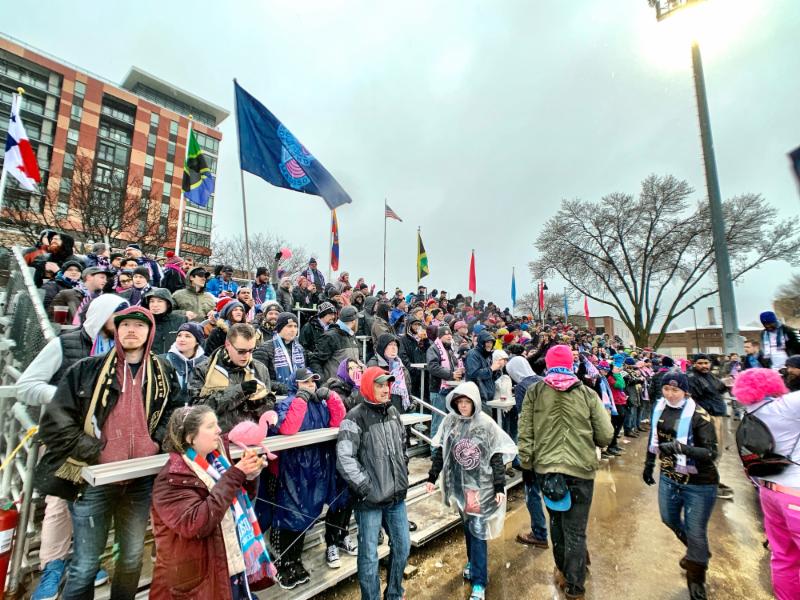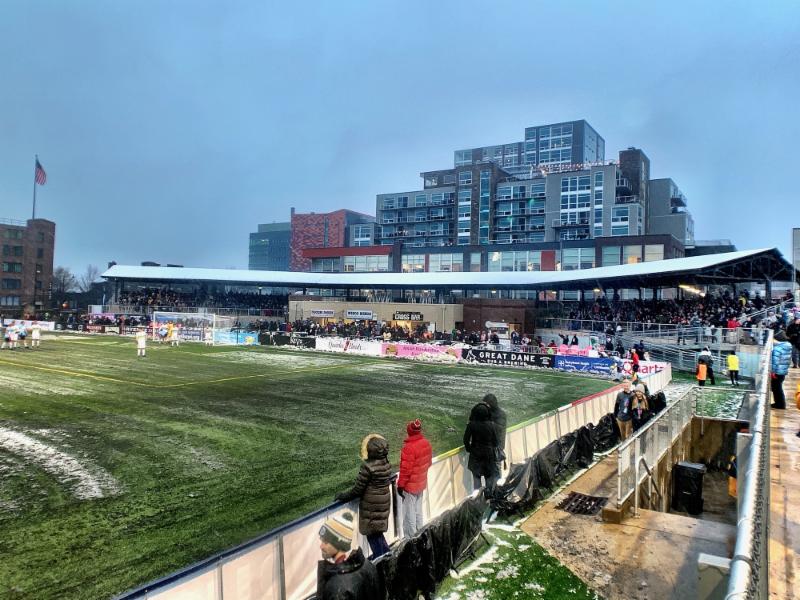
As we near the end of the professional soccer season, Soccer Stadium Digest brings you our first-ever Awards of Distinction, highlighting the cutting edge in pro-soccer facilities. Launching our inaugural effort: Breese Stevens Field, home of USL League One’s Forward Madison FC.
We’ll be following up in coming weeks with awards covering MLS, NWSL and USL Championship facilities and teams.
While Division II soccer has been around in the United States for many years, the economic model as applied to its facilities is still a work in process. In both Division II USL Championship and Division III USL League One, there are very few soccer-specific stadiums in use. Most are either converted football stadiums, MLS stadiums, Minor League Baseball ballparks or training-camp venues. More new facilities are on the way, such as new Louisville and Tacoma facilities, but we’re still very much in the beginning stage of Division II and III soccer-facility design.
Breese Stevens Field is an exception to this usage. Opening in 1926 and expanded in 1934 with Civil Works Administration funding, Breese Stevens Field hosted professional baseball and high-school football for decades, including the 1982 Madison Muskies of the Low-A Midwest League. But with the opening of Warner Park on Madison’s North Side, which included a new ballpark and an adjacent football field, Breese Stevens Field fell into disuse.
By the time Big Top Sports and Entertainment took over Breese Stevens Field management in 2015, the city had started putting money back into the facility, including the installation of artificial turf in 2014. Located eight blocks from the Wisconsin State Capitol building on Madison’s isthmus, Breese Stevens Field benefits from a large footprint (two full city blocks), an enviable location in a changing urban landscape (three new apartment/retail complexes sit within two blocks of the stadium, with more on the way), and a city commitment to the property, as Madison officials withstood financial temptations to sell off the land.
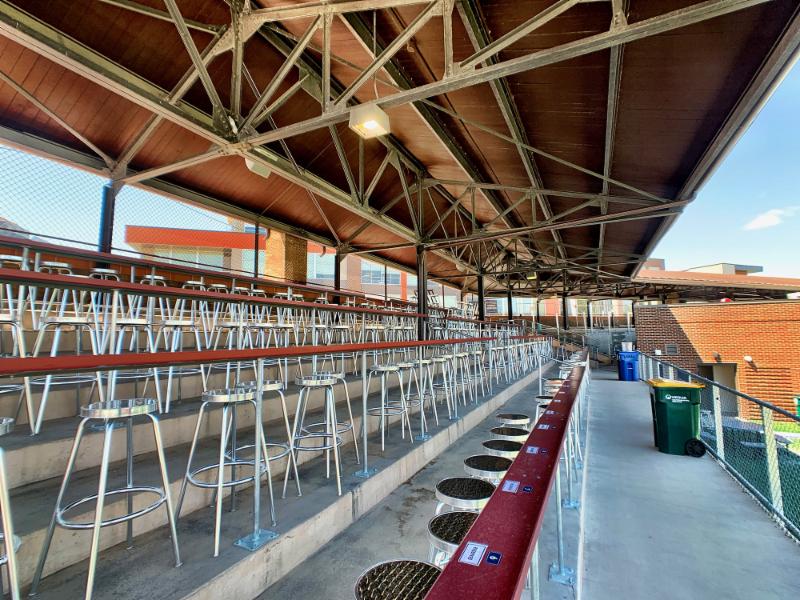
With our 2019 Awards of Distinction, we’re taking a slightly different tack from most year-end galas and focusing on what the rest of the sports-facilities world can take away from the success of Forward Madison FC and Breese Stevens Field. Forward Madison FC led USL League One in attendance in the circuit’s inaugural season, posting a few sellouts along the way. We sat down with team Chief Operating Officer Conor Caloia at a recent match and came away with the following lessons:
1) Create neighborhoods within the facility. Because Breese Stevens Field had been constructed in phases over the years, the seating was already on the fragmented side, with an end-zone grandstand formerly used as the main baseball seating augmented by traditional football grandstands on the west side of the pitch. Bringing in USL League One play prompted Forward Madison and the city’s Parks Division to move forward with a $3.2-million renovation plan that included new permanent field-level suites, a supporters section, a new concessions/restroom building, a VIP tent and pop-up food/beverage stations. A row of VIP seating is situated on each side of the benches, while a larger group area with elevated four tops is located at one end of the pitch.
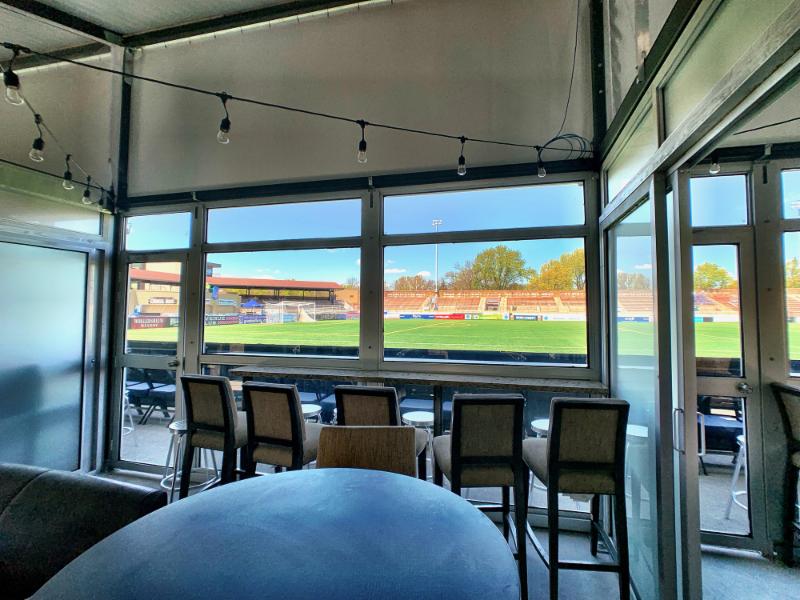
2) Acknowledge a diversity of fans and their commitment to soccer. U.S. professional soccer, in its current iteration, is built on the passion of hardcore soccer fans. But as many in pro sports know, relying on hardcore fans is a limited strategy. Go to a pro soccer game at Breese Stevens Field and there’s plenty of entertainment aside from the action, like kids’ activities and more. You don’t need to be a hardcore soccer devotee to enjoy a Forward Madison match. All-inclusive areas are located on the south side of the stadium, in a converted portion of the grandstand and on the rooftop of the new concessions/restroom building. Typically, all-inclusive areas attract more casual fans who are just as interested in socializing with friends as they are in watching the action. Big Top Sports and Entertainment runs four Northwoods League summer-collegiate baseball teams, including the wildly successful Madison Mallards, and brought that expertise to pro soccer. The Mallards are successful thanks to a unique and energetic approach to baseball—in other words, you don’t need to be a baseball fan to have a great time at a Mallards game—and it’s an operating strategy adapted well to Forward Madison matches.
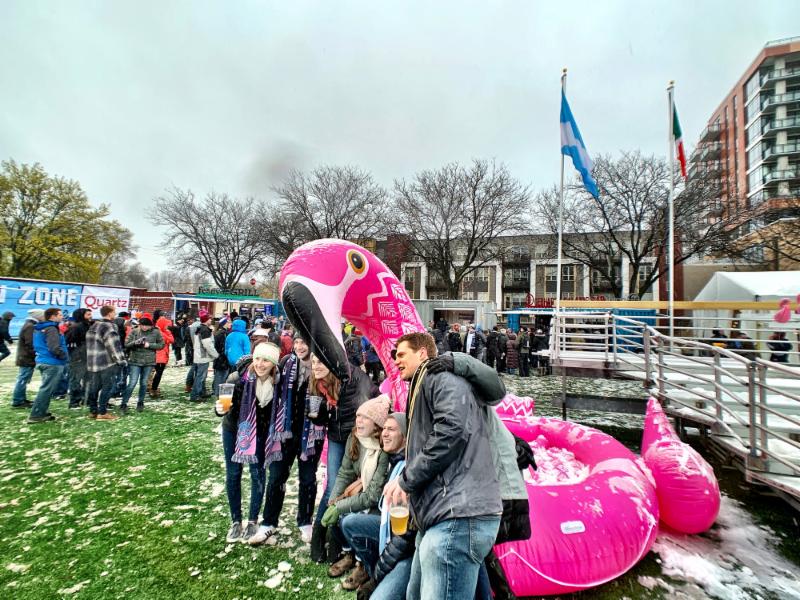
3) Plan for plenty of fan movement inside the stadium. The days of a fan staying in their seats for an entire match are long gone. Thanks to the large footprint at Breese Stevens there are plenty of spots around the pitch to watch the game from different vantages. Fans may start in their seats, migrate to either end and watch part of the match with their friends while nursing a beer, and then head to the other end of the playing field to take in the second-half action and enjoy entertainment from the supporters section. (Fans are placed as close to the pitch as FIFA rules allow, adding to the atmosphere, but a good chunk of that space is open to all.) That means for a design that transcends the football model of two grandstands running the length of the pitch and some open goal-side spaces. Breese Stevens Field doesn’t feel like a football stadium converted to soccer.
Will the Breese Stevens Field model be applied to other USL Championship and USL League One venues? Hard to say, though we’re eager to see how a new Louisville City stadium turns out in 2020. For future financial success, however, the future is in dedicated pro-soccer facilities and not operating as a secondary tenant in a pro-baseball venue—and in the case of Breese Stevens Field, the industry has a workable model for making Division II and Division III work on a financial basis.
